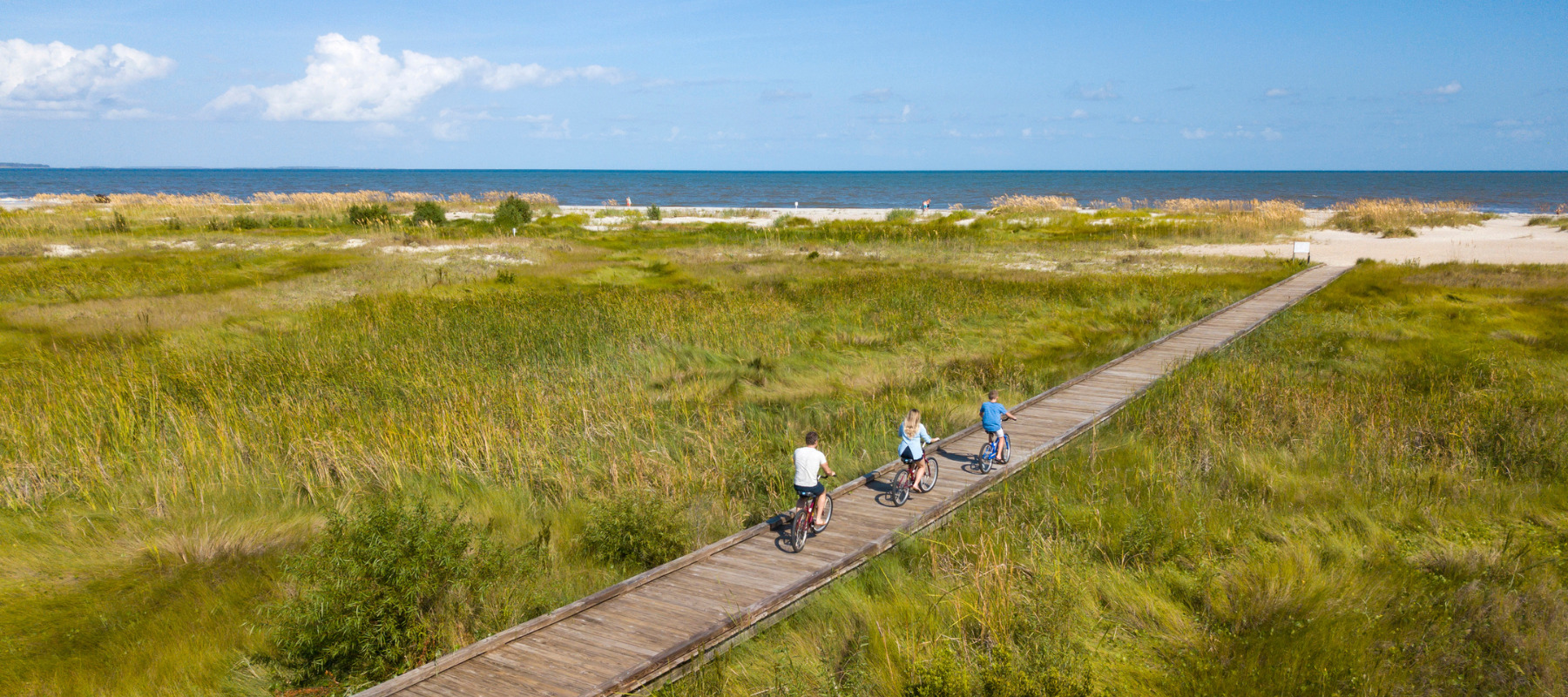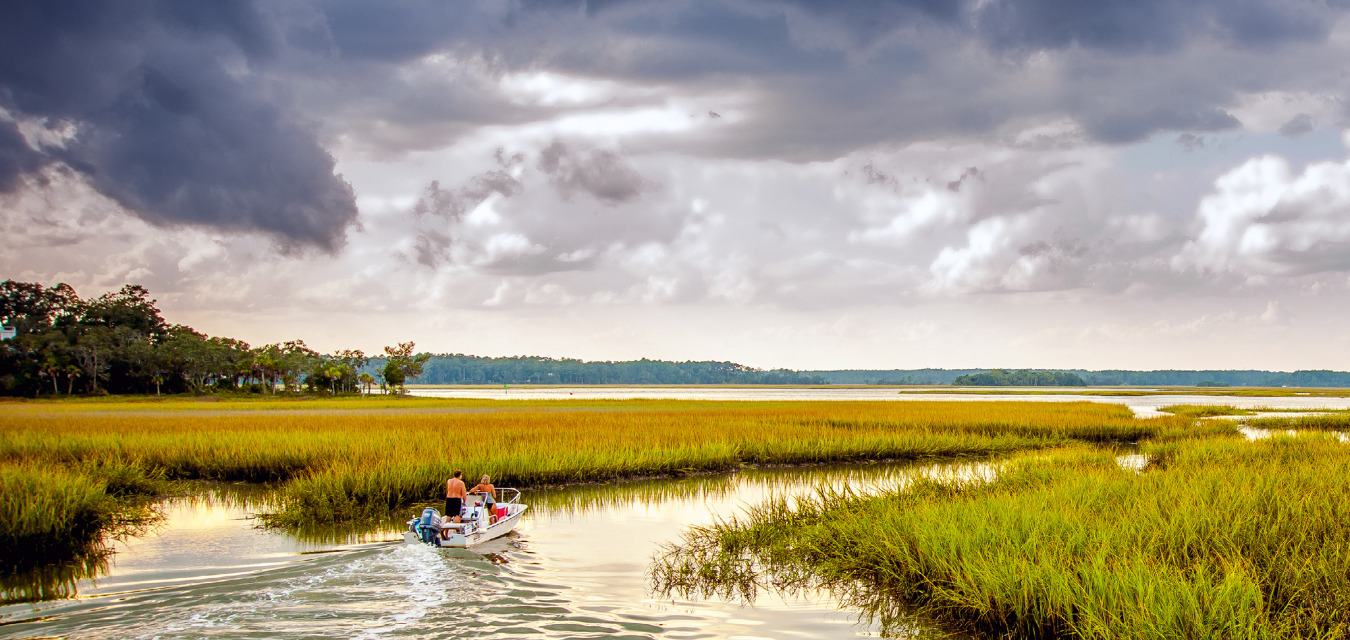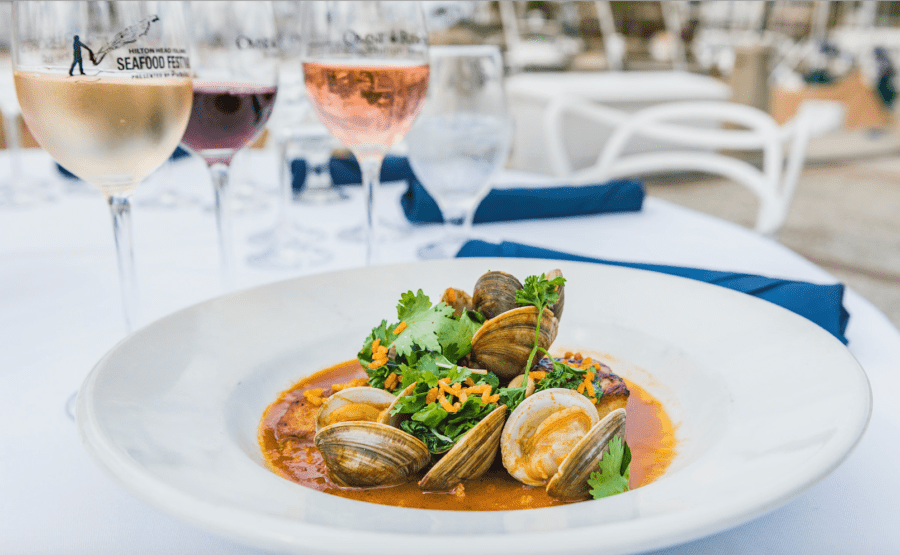The best way to understand beloved South Carolina tourist destination Hilton Head is to dig a little deeper.
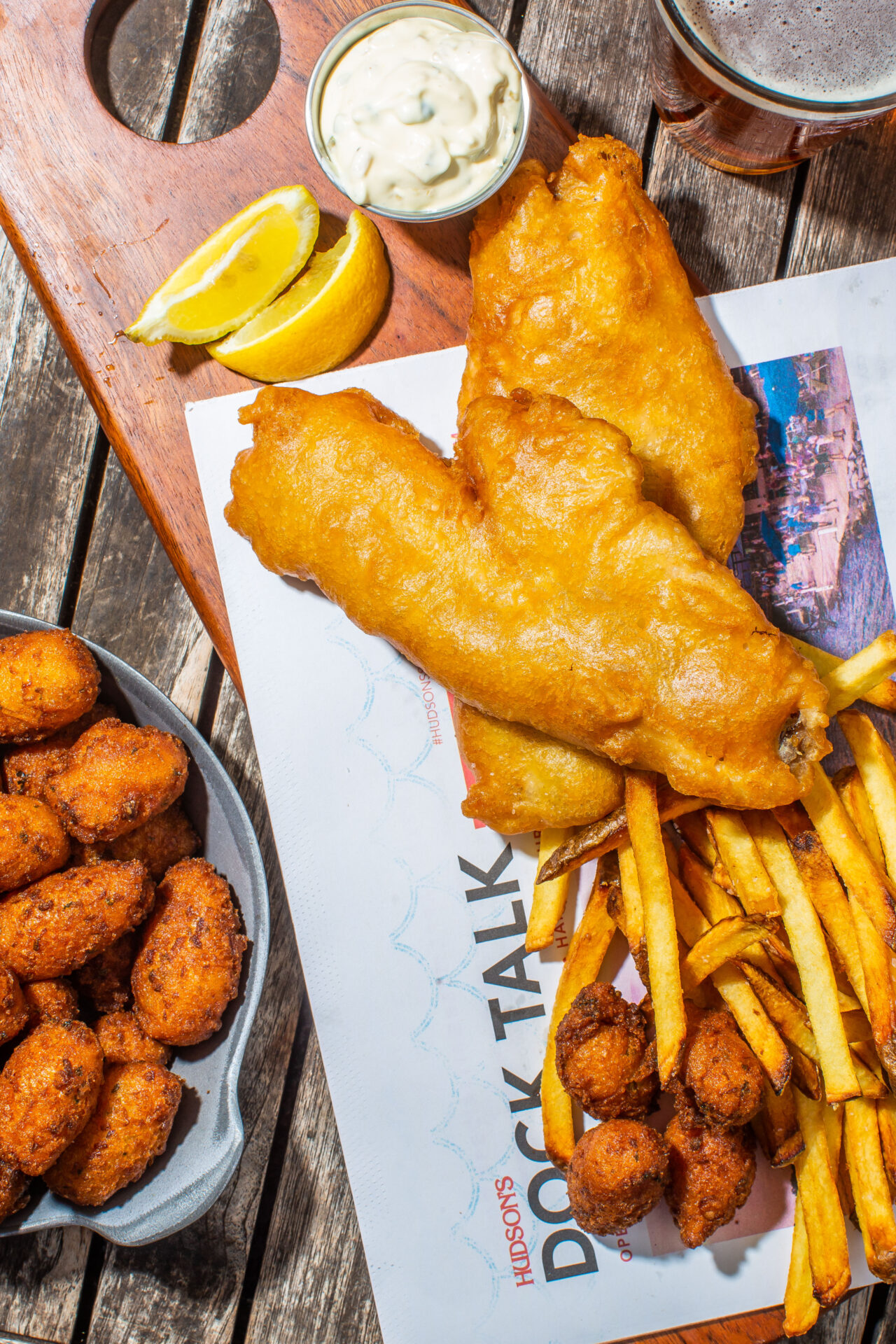
My earliest memories in life involve driving across the bridge connecting Hilton Head Island, South Carolina, to the mainland. Now a fourlane stretch, the roadway to the East Coast’s second-longest barrier island was just a two-lane toll bridge when I first started making the trek as an infant in the late 1970s—still, my favorite moment of every visit is rolling down the windows to throw a wave to any boats in view and inhale the scent of pluff mud on a low tide.
These days, I’m usually headed down to visit my parents, who now live on the island full time and allow me and my family to crash with them for several weeks out of every year. Because of the inevitable I-95 traffic, our journey to the island usually involves coming in on the back roads, which requires a swing through Old Town Bluffton, where I always debate whether to stop at the Squat ‘N’ Gobble or Bluffton Oyster Company, which has sat on the May River since 1899, before making the turn toward US Route 278.
While Hilton Head attracts visitors to its wide, white-sand beaches, sprawling golf courses, and iconic Harbour Town lighthouse, Bluffton draws them in with its historic, Lowcountry charm. The two destinations have distinctly different yet intertwined histories—Hilton Head holds an important space in the Gullah community (the historic Mitchelville community was one of the first places newly emancipated slaves were able to buy land) while Bluffton was once home to sprawling plantations as well as the birth of the Secession movement. Yes, it’s complicated and layered. But as an insider, I appreciate that history still plays a role in the living, breathing community I love today.
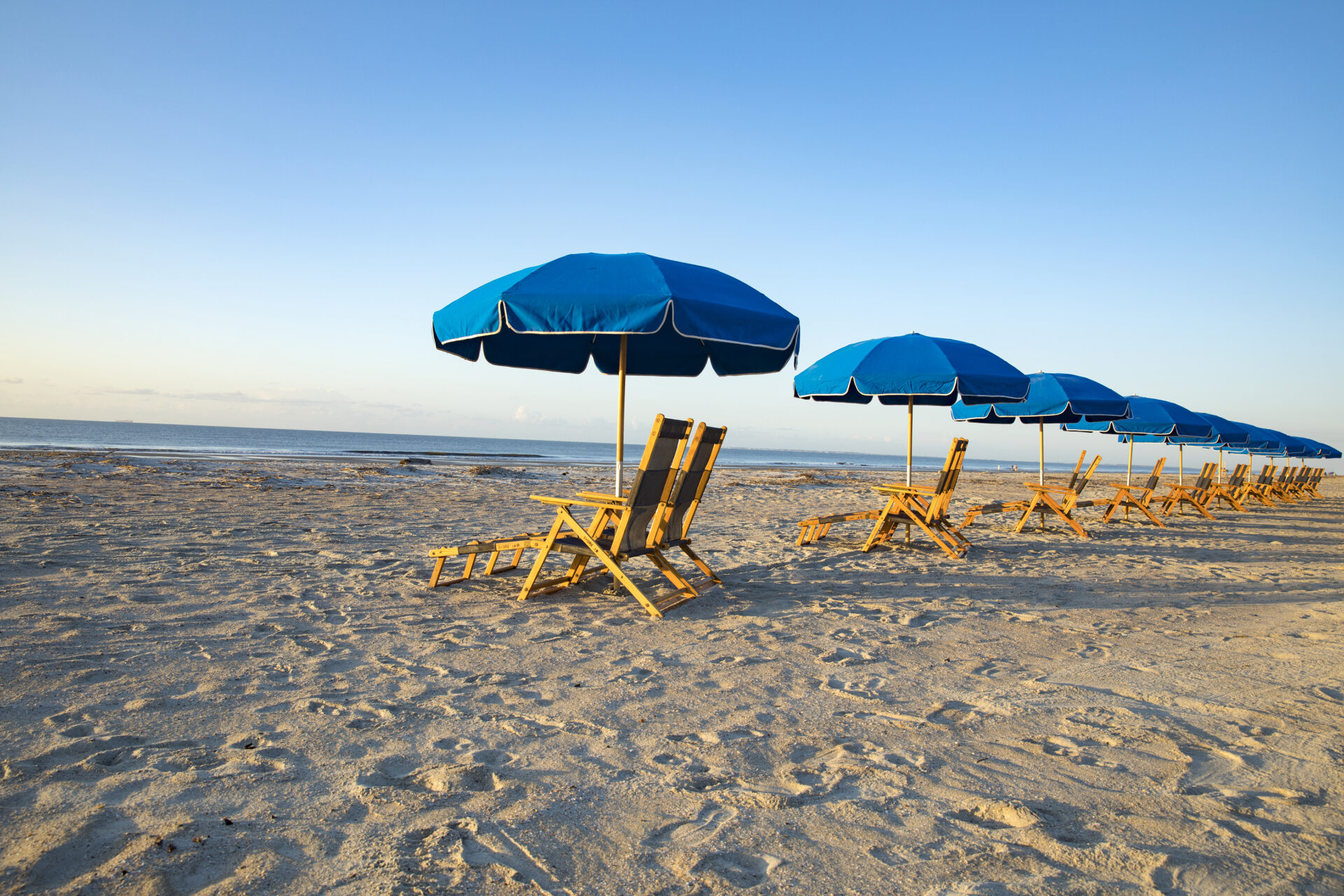
My trips down these days allow me to spend time both on island and off—and wherever I am, I’m eating well. Whether it’s a beer and platter of oysters at the waterside patios that line Skull Creek on Hilton Head or lamb ribs and glass of natural wine at the contemporary restaurants in Bluffton, the food scene in this corner of the state is constantly evolving. Are there fried shrimp and hushpuppies just about everywhere? Absolutely. But these days, I often find island-raised oysters, divine French pastries, West African peanut stew, and a bevy of locally distilled spirits—not to mention, hyperfresh seafood at every turn.
Still, I’d be doing a disservice to the area if I didn’t acknowledge that underneath all those incredible dining experiences, there’s an industrious community that keeps the hospitality business rolling—from fishermen to farmers to those doing the dishes. Those are the stories worth sharing. Because while the dining scenes of Hilton Head and Bluffton are certainly built for tourists, like any top-tier destination, they’re fueled by locals—and these are a few I think you should get to know.
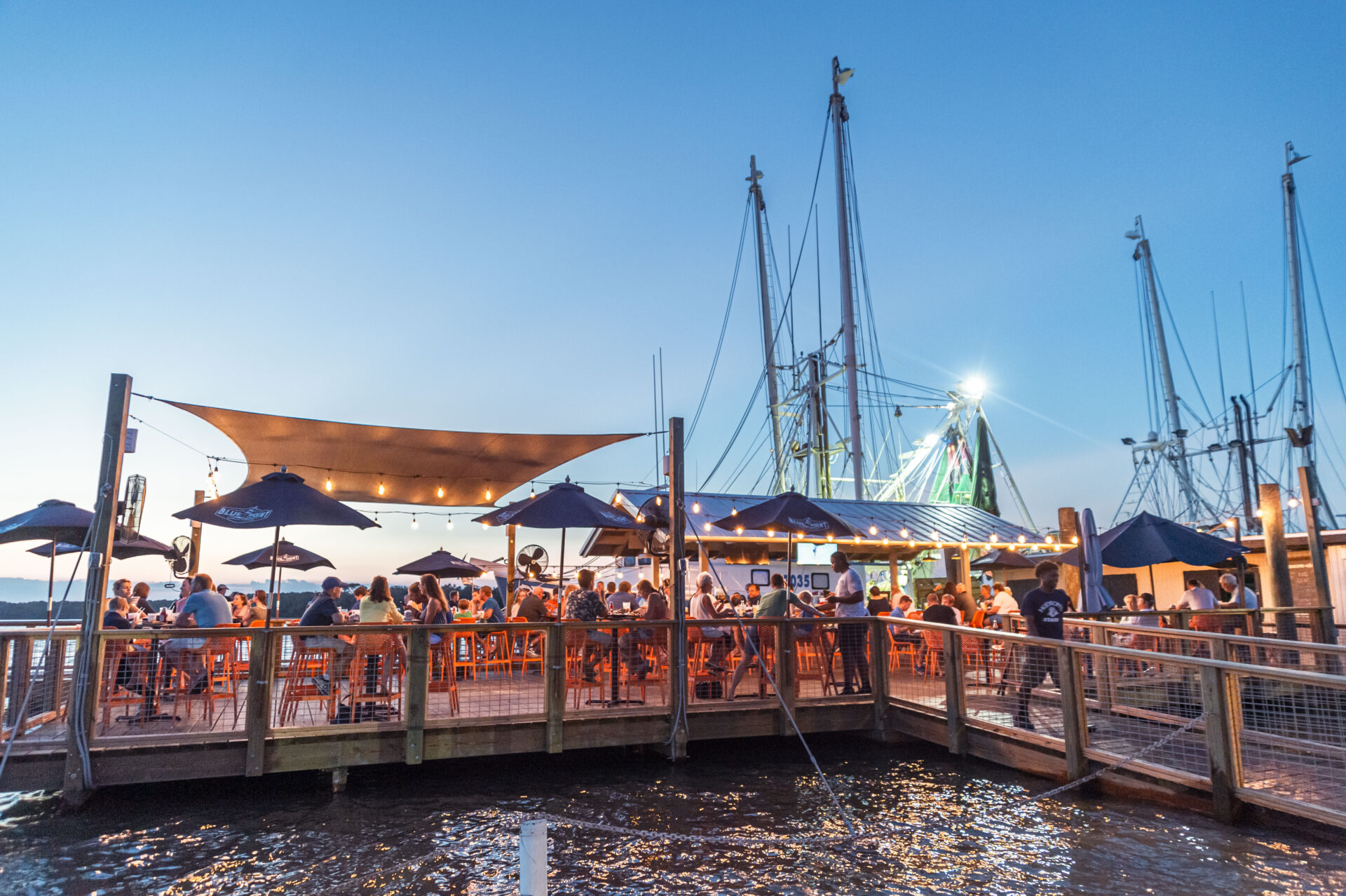
An Island Giving Back
Tourism undoubtedly drives the restaurant scene in Hilton Head, and yet it’s also full of destinations that offer a sense of place. There’s Sunset Grille, a hidden gem set just beside an RV park with one of the best evening views on the island, as well as Fishcamp on Broad Creek, a rustic, downhome seafood joint that sits on the same spot where a captain with a motorboat acted as a ferry when there were no bridges to the island. While the iconic waterside restaurant Quarterdeck at Harbour Town recently received a massive renovation, it’s the service and laid-back elegance found at ELA’s On the Water in Shelter Cove that keep locals like my parents coming back.
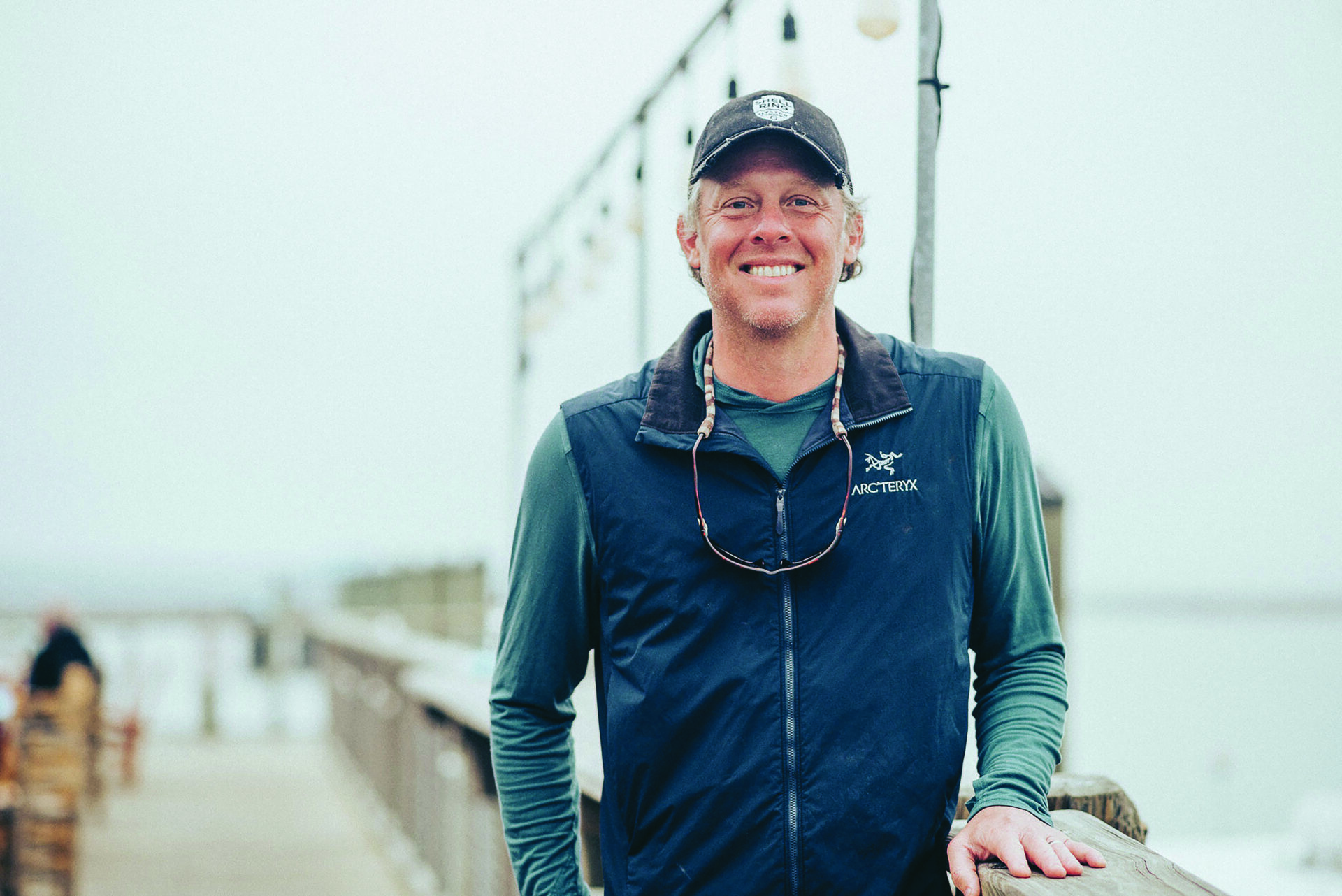
After the one-two punch of hurricanes Matthew and Irma, both of which displaced residents and devastated the island’s infrastructure, poststorm development has given large hospitality groups the opportunity to expand. But to me, it’s restaurants like Hudson’s Seafood House on the Docks, which has been in operation in various forms since the 1950s, and weathered the brunt of Matthew, that truly carry the island’s legacy forward.
Lifelong islander Andrew Carmines, general manager and part of the family that owns Hudson’s, has watched the island evolve from the water’s edge—the restaurant sits on a jut of land overlooking Skull Creek that’s made up of spent oyster shells from when it was an oyster factory opened by J.B. Hudson Sr. in 1912. A restaurant evolved on the space, eventually called Hudson’s, which Carmines’ parents, Brian and Gloria, bought in 1975. Carmines grew up working around the restaurant and becameso enamored with oysters, they were the topic of his fourth-grade science project. He left the island for a while to work and travel elsewhere but came back in 2006 to run the family business.
Carmines’ obsession with seafood now plays out on Hudson’s menu, which is packed with fish and shellfish that come directly from the waters overlooked by the restaurant’s dockside dining perch. “We really only have about one commercial fishing boat on the island. And that’s it, right there,” Carmines tells me, pointing to a large vessel docked next to the patio. “Vermilion snapper, black sea bass, grouper—it’s coming in right here, he’s cleaning the fish here,” he adds. As we speak, a fisherman does just that at a commercial-grade table at one end of the dock, while a decently sized lemon shark circles the pilings in search of scraps. Carmines shakes his head, adding, “Some diners don’t believe it when I tell them we’re getting swordfish and mahi from these waters.”
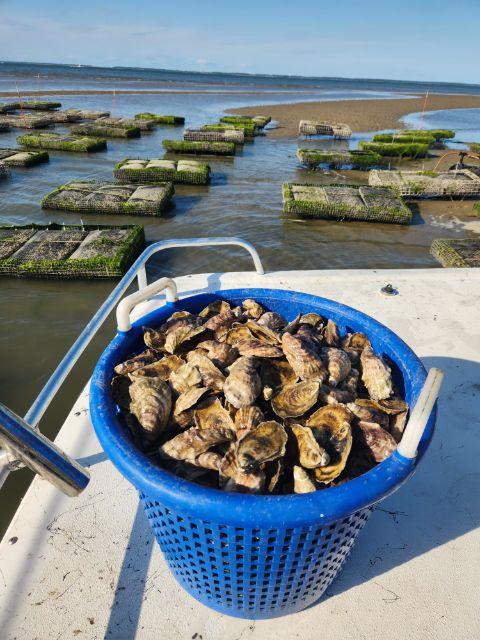
It shouldn’t come as a surprise then, that Carmines has taken some of the sourcing in house: In 2015, unsatisfied with the softshell crabs he was getting from other purveyors, he decided to cultivate his own. That led to his natural next step: starting his own oyster farm. “We’re able to go and pick oysters in the morning for lunch service, and again in the afternoon. That was one reason we started the farm: to provide somebody with the experience of eating an oyster as if they were picking it themselves,” he says. Shell Ring Oyster Company, which is based on a lease off of neighboring Pinkney Island, got its start in 2015 but was put on hold by Hurricane Matthew in 2016, which also put the restaurant underwater. More setbacks came— during the pandemic, Carmines was too busy batching up she-crab soup takeout orders to mind his oysters—but he’s since taken on a partner and there are plans to grow even more oysters down the road; the firm, narrow shells have a tinge of purple and the meat tastes of a mingling of sea and marsh, not too briny but full of seagrass flavor. They’ll also harvest their first crop of clams this winter.
Carmines’ family has long invested in the island’s greater well being, too. About 25 years ago, his father, Brian, started inviting those who didn’t have a place to go on Thanksgiving to a free meal at the restaurant. The tradition continues with a crew of volunteers (my own parents included) who opt out of a home-cooked holiday in order to serve around 90 turkeys plus sides to as many as 1,200 people each year. The Carmineses also created the David M. Carmines Foundation in honor of Andrew’s brother, who succumbed to cancer in his 20s. The foundation puts on the annual Hilton Head Seafood Festival each winter.
The family’s efforts to help support the island’s dining community have gone far—they also support island organizations and services that are essential to the industry. As with any tourism destination, the island’s hospitality workers—servers, bussers, bartenders, dishwashers, cleaning staff, and landscapers—are often the least looked after when it comes to health care. That’s where Volunteers in Medicine comes in. Run entirely by an army of volunteer doctors and support staff, VIM is a free health care clinic, open since 1993, that serves anyone not covered elsewhere, which includes many of the island’s hospitality staffers. (Full disclosure: My mom has volunteered and worked for VIM since moving to the island over a decade ago and, most recently, helped oversee the installation of several hydroponic gardens at the clinic, which provide fresh produce for patients to take home with them.)
VIM also serves some members of the most important and vulnerable population on the island: the Gullah. Established in the early days of Emancipation, the Gullah community of Hilton Head has been fighting to preserve both their land and their culture, much of which has been lost to and threatened by outside development. According to the Gullah Museum of Hilton Head Island, 95 percent of the island’s population was once Gullah; today, it’s around 5 percent. At the museum, as well as at Historic Mitchelville Freedom Park, visitors and descendants can better understand the legacy and learn how to do their part to support those preservation efforts.
One recent area transplant is attempt ing just that: Billy Watterson landed in Bluffton in 2017 with an eye toward opening a distillery. After researching the history of the area, he landed on a location and a name, Burnt Church Distillery, which opened in 2021. Set near a road with the same name, the distillery sources, blends, and crafts a broad range of spirits, including whiskeys, vodkas, gins, and a popular nonalcoholic spirit called Amethyst; this past summer, the team also opened the Bank on Hilton Head, a food hall and beer garden set in the former building of a big-name financial institution.
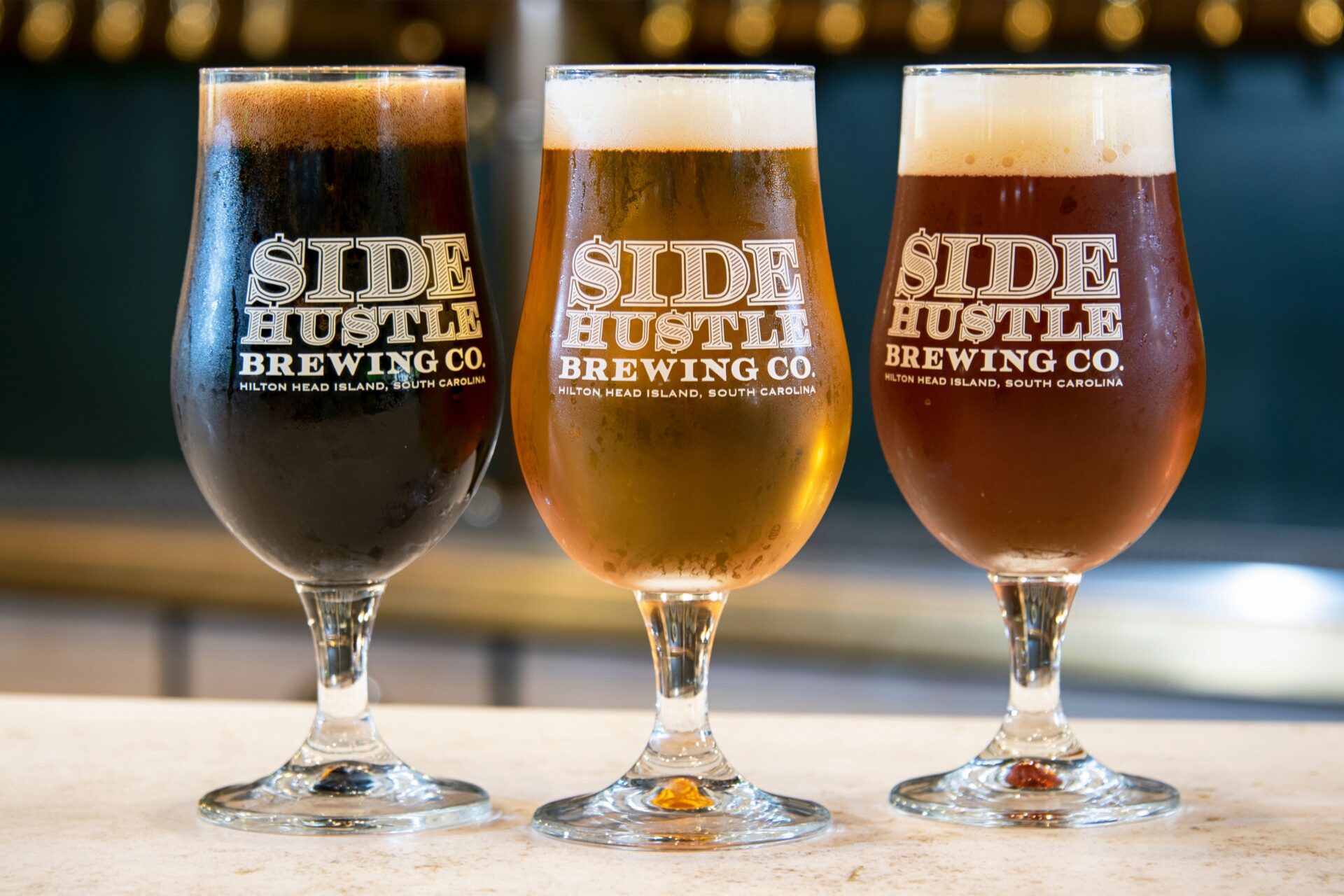
While his might seem like a familiar tale of an outsider sweeping in to capitalize on a region’s success, Watterson is working to flip the script. Understanding that he is in a position to provide resources and open doors for others, he’s extended his hand to the region’s Black and minority communities. From working alongside local community organizer Bridgette Frazier to launch Black Equity University, which coaches minority entrepreneurs to get them off the ground, to establishing the Island Legacy Fund, which focuses on housing, childcare, and preservation initiatives on Hilton Head, his work has quickly made an impact.
When the Bank opened in May 2023, the newly created Island Legacy Fund provided a million-dollar grant to Historic Mitchelville Freedom Park, giving the organization a boost as it moves closer to building a structure at the site. A portion of sales at the Bank are going to the fund as well. For an island whose identity and culture have been nearly buried by development, efforts like Watterson’s can be seen as a tidal change.
Eat + Drink
Hilton Head
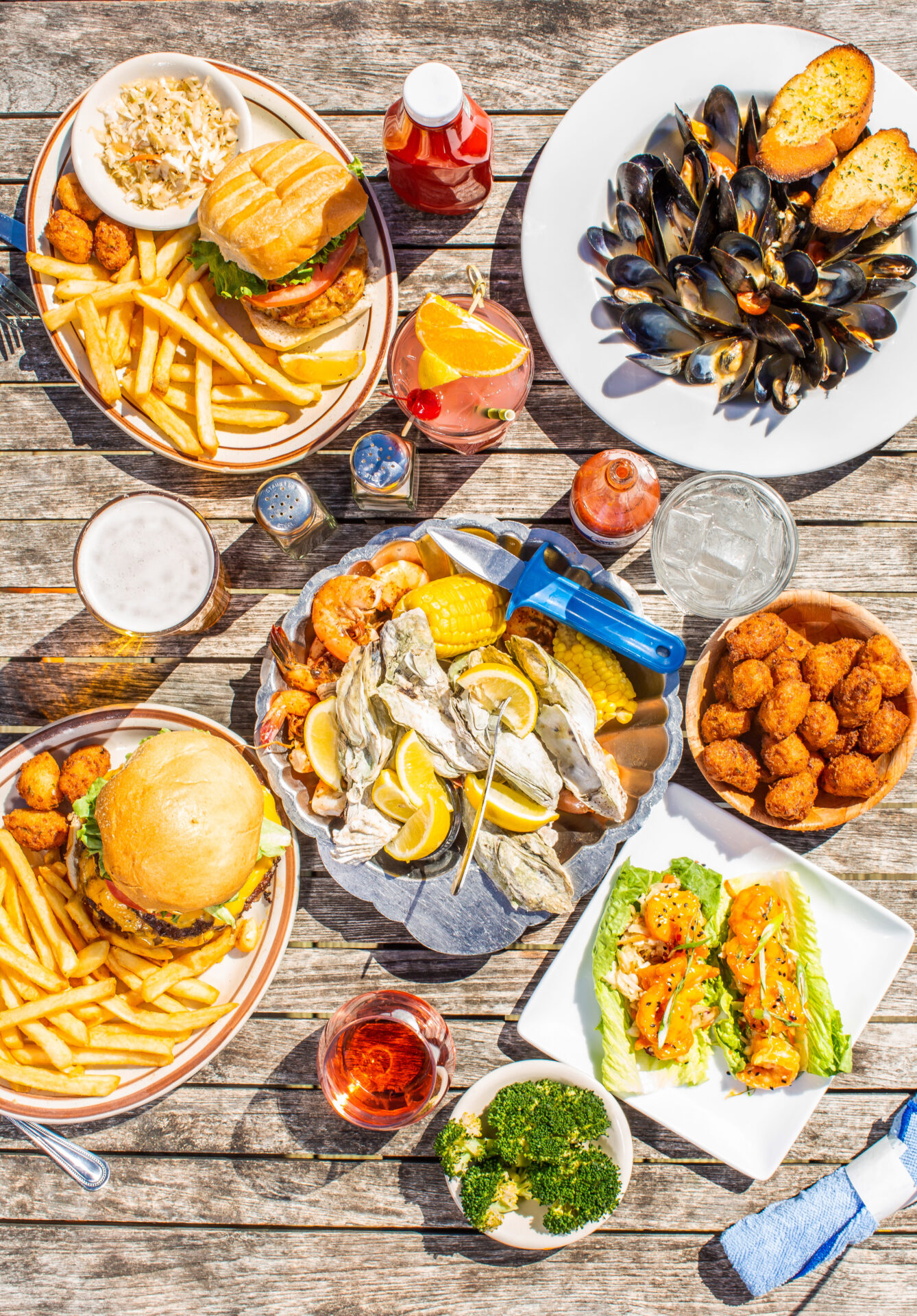
The Bank
One of Hilton Head’s latest openings is the Bank, set inside a former Bank of America building turned food hall off Pope Avenue. Local brewer Side Hustle anchors the bar, and there’s a selection of independently owned food trucks surrounding the beer gar den. Grab a brick-oven pizza or some burgers, then head outside for yard games and live music.
Fishcamp on Broad Creek
When you’re on a beach vacation, this is the type of restaurant you want: a well-worn, casual indoor-outdoor space. Come here for Lowcountry boil, a fried seafood platter, and crab cakes, as well as composed dishes, plus live music on the weekends.
Hilton Head Social Bakery
French-born pastry chef Philippe Feret was raised by a chef and landed in Hilton Head after running several French restaurants in New York. His pastries speak to his pedigree—crusty croissants, ornately decorated tarts, and sugar-dusted kouign amann—as does his following. (He’s often sold out before midday.) Look for locations in Shelter Cove and on the south end of the island.
Hudson’s Seafood House on the Docks
This historic property often has lines out the door, so go early. If you choose to sit outdoors on the dock, there are waterfront views and shaded canopies, but inside shows off the original structure’s charm. Wherever you are, don’t miss the house-grown Shell Ring oysters, softshells when they’re in seasons, and whatever local catch is on the menu.

Lucky Beach Bar + Kitchen
One of the newest beach-themed kids on the block, Lucky Beach provides a mix of eclectic, Southern, and seafoodfocused fare like a stellar ceviche, spicy crab bread, and a crowd-pleasing collard green melt. Look for their sister restaurant, the more upscale Lucky Rooster Kitchen + Bar, farther south on the island.
The Quarterdeck
After an impressive renovation, the Quarterdeck delivers a bang-for-yourbuck view from its multiple stories and dining areas. There are bars both upstairs and downstairs, as well as a large deck built for sunset selfies. Start with she-crab soup and Daufuskie deviled crab dip before moving on to locally
caught grouper Rockefeller.
Sprout Momma Bakery and Cafe
You’ll find some of the best breads on the island at Sprout Momma, a family outfit that recently landed in a brickand-mortar space at the south end of the island. Open for lunch (think chick en salad on soft croissants, Reubens, bánh mì, and a range of flatbreads),they also have a compact bar for happy hour.
Keep Reading
Partnered
Bluffton, South Carolina: A Weekend Itinerary
Discover how to experience all of Bluffton and its Southern charm, beautiful views, history, fine dining, and fresh seafood in a weekend.
Partnered
Discover Why the South Carolina Lowcountry Is Naturally Amazing
The South Carolina Lowcountry is full of good food, good people, and the great outdoors. Come discover the history and beauty.
Other
Hilton Head Seafood Festival
This weeklong, family-friendly event is full of local seafood, celebrity guests chefs, culinary classes, live music, and more. From Lowcountry oyster roasts to dishes featuring the day’s fresh catch, the Hilton Head Seafood Festival celebrates the bounty of South […]
share
trending content
-
The Best Southern Cookbooks of the Season
-
How to Make Kolaches with Joy the Baker | Video
by Amber Chase -
Long Live Oyster Season at Darling Oyster Bar
by TLP's Partners -
Recap: TLP x Charleston Wine + Food
by TLP Editors -
Exploring Mississippi: A Quintessential Southern Experience





